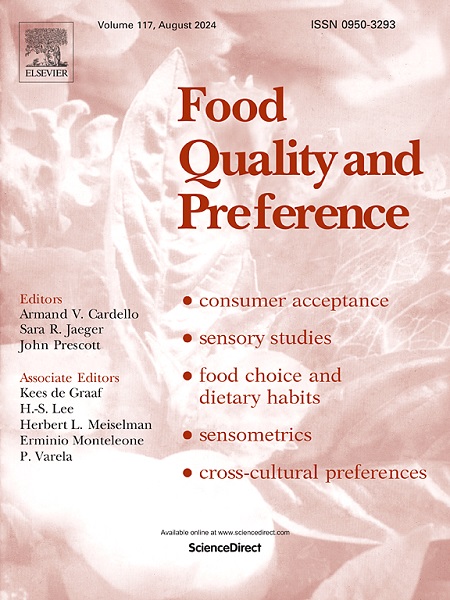The yuck factor of leftovers – How disgust shapes our food waste behaviours
IF 4.9
1区 农林科学
Q1 FOOD SCIENCE & TECHNOLOGY
引用次数: 0
Abstract
Leftovers fall into the grey zone of “not being considered as food anymore” and thus are more likely to be discarded. Some campaigns to reduce food waste regard leftover management as a probable way to reduce food waste. In this context, different levels and sources of leftovers are defined. However, there is no evidence that leftovers are viewed equally by consumers. In this context, the role of affect over cognitive factors of food waste deserves attention to shed light on what makes people discard their leftovers. We investigate the role of food disgust sensitivity in shaping the rejection of leftovers in an online sample representative of the German population in terms of age and gender (n = 319 participants included in the analysis). Food disgust sensitivity is highly associated with disgust for leftovers. We showed how specific leftover characteristics differently elicit disgust and identified three predictive factors of disgust for leftovers. Leftovers of others were found more disgusting than the own plate leftovers, as well as leftovers that were mixed in the plates. These characteristics also negatively influence the intention to eat the leftovers. We found that individuals with higher disgust sensitivity are less likely to adopt leftover-friendly management behaviours and show intention to use leftovers for a meal. Disgust for stored leftovers was associated with less daily food waste, reported with food waste diaries over two times seven days (n = 113). This is a significant insight with regard to marketing and campaign work: rather than pre-cooking, the recommendation is to eat up.
剩菜的恶心因素——厌恶如何塑造我们的食物浪费行为
剩饭剩菜处于“不再被视为食物”的灰色地带,因此更容易被丢弃。一些减少食物浪费的运动将剩菜管理视为减少食物浪费的可能途径。在这种情况下,定义了不同的水平和剩菜的来源。然而,没有证据表明消费者对剩饭剩菜的看法是平等的。在这种背景下,情感对食物浪费的认知因素的作用值得关注,以揭示人们丢弃剩菜的原因。我们调查了食物厌恶敏感性在德国人口年龄和性别方面的在线样本中的作用(n = 319参与者纳入分析)。食物厌恶敏感性与对剩菜的厌恶高度相关。我们展示了特定的剩菜特征如何不同地引起厌恶,并确定了对剩菜的厌恶的三个预测因素。别人盘子里的剩菜比自己盘子里的剩菜更恶心,盘子里的剩菜也一样。这些特点也会对吃剩菜的意愿产生负面影响。我们发现,厌恶敏感度较高的人不太可能采取对剩菜友好的管理行为,也不太可能表现出用剩菜吃饭的意图。对储存的剩菜的厌恶与较少的日常食物浪费有关,在七天两次的食物浪费日记中报告(n = 113)。这是一个关于市场营销和活动工作的重要见解:建议是吃完,而不是预先烹饪。
本文章由计算机程序翻译,如有差异,请以英文原文为准。
求助全文
约1分钟内获得全文
求助全文
来源期刊

Food Quality and Preference
工程技术-食品科技
CiteScore
10.40
自引率
15.10%
发文量
263
审稿时长
38 days
期刊介绍:
Food Quality and Preference is a journal devoted to sensory, consumer and behavioural research in food and non-food products. It publishes original research, critical reviews, and short communications in sensory and consumer science, and sensometrics. In addition, the journal publishes special invited issues on important timely topics and from relevant conferences. These are aimed at bridging the gap between research and application, bringing together authors and readers in consumer and market research, sensory science, sensometrics and sensory evaluation, nutrition and food choice, as well as food research, product development and sensory quality assurance. Submissions to Food Quality and Preference are limited to papers that include some form of human measurement; papers that are limited to physical/chemical measures or the routine application of sensory, consumer or econometric analysis will not be considered unless they specifically make a novel scientific contribution in line with the journal''s coverage as outlined below.
 求助内容:
求助内容: 应助结果提醒方式:
应助结果提醒方式:


